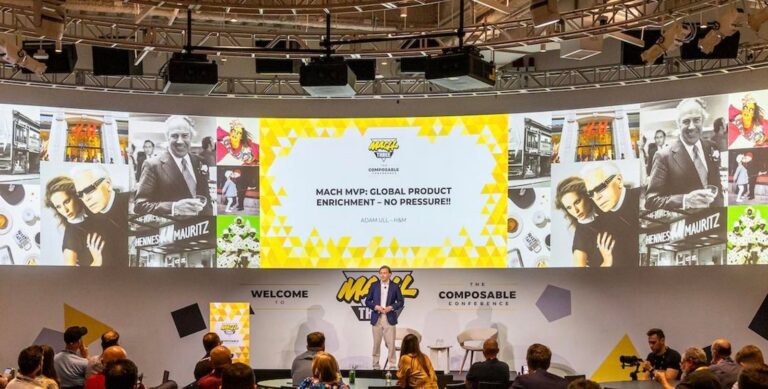The MACH Alliance is a non-profit industry association promoting an open and best-in-class enterprise. … [+]
Retailers and brands came together at the MACH Three conference in New York City to collaborate on the importance of a flexible technology infrastructure to improve online and offline shopper experiences. Over the past few years, retailers have been challenged to break away from legacy systems that don’t offer the agility and flexibility to keep up with technological advancements. As consumer expectations rise exponentially, retailers must evolve and deliver solutions that improve the retail experience from product development through customer post-purchase.
Three key takeaways from the conference:
- Focus on products, not projects.
- Transparency and trust are key across our business.
- Stay away from shiny things.
The keynote focused on the need for speed, agility and cost optimization in the new world. … [+]
Composable Technology Drives Loyalty
Anca Iordanescu, IKEA’s vice president of Engineering and Store of the Future and co-founder of the WomenInTech Alliance (Sweden), delivered a keynote address at last year’s conference, talking about the progress IKEA is making to provide customers with a better in-store environment through technology. “We wanted to understand the technology we needed to draw customers into our stores, provide personalized experiences, and design these solutions with sustainability in mind,” Iordanescu said. This year, she moderated a session at the conference focused on configurable technologies that enable flexibility and speed. “Using configurable technologies, we want to build differentiated products that not only optimize costs, but also bring value to our customer base,” Iordanescu said.
Product remains king
Retail IT teams have historically focused on project management driven by requests from various business constituencies. However, thought leaders at the conference revealed a trend toward a focus on product. Technology teams need to understand the products and services offered and how customers interact with those products to build the infrastructure that supports the shopping journey.
Customer service teams are another key feedback channel for retailers: “They’re the ones that deal with customer enquiries, so keeping them close by is key,” says Hannah Bennett, head of digital at Paul Smith.
Collaboration, common themes
The need for all functional areas to work together was a key theme throughout the conference. IT may hold the keys to technology development, but the only way to meet customer expectations is to partner with all functional areas and become the gatekeeper for technology requests to build a cohesive customer experience.
Industry executives from around the world join forces to define best practices for using composable devices … [+]
“It’s important to have trust and transparency with different features across the business,” says Debra Hua, product manager at Shoe Carnival. “I strive to improve the experience on my website, so it’s important to make sure we deliver that to our customers, but it starts with working with our partners internally.” Hua noted the Wild Wild West list of IT enhancement requests that retailers are known to ask their IT departments for. Today’s job is to vet the requests and think holistically about advances in technology. In the past, retailers would always chase the latest shiny thing, the newest technology, but today there are hundreds of shiny things that shine brightly and, if not fully validated by the business, can stifle innovation.
“Especially as a privately held company, our business stakeholders impact our business. We focus on clear whys and build strong partnerships internally to mitigate challenges and feedback,” said Allison Grimes, product manager at Raymour & Flanigan.
Open and best-of-breed technology
As interest and interest in generative AI grows, companies find that building a technology stack in-house can be a daunting task. The answer is composable technology. Neiman Marcus Group (NMG) needed to restructure their IT program to keep up with the rapid changes within the company’s technology infrastructure. Neiman Marcus’ website was built on a monolith website, with code changes happening only twice a month. Identified updates took more than a year to implement, and by the time the changes were made, they were often no longer relevant.
NMG had to reorganize their people and product teams to identify and solve problems faster. Circle reporting (Holacracy) was implemented, no one reports to anyone, no meetings are held, no enhancements or bug fixes need approvals. Everyone runs a team and must contribute with discipline and a focus on ROI.
The MACH Alliance is a non-profit industry association promoting an open, best-of-breed enterprise technology ecosystem. MACH is an industry technical standard that describes the latest technology. The prerequisites for achieving this standard are microservices-based, API-first, cloud-native SaaS, and headless.

